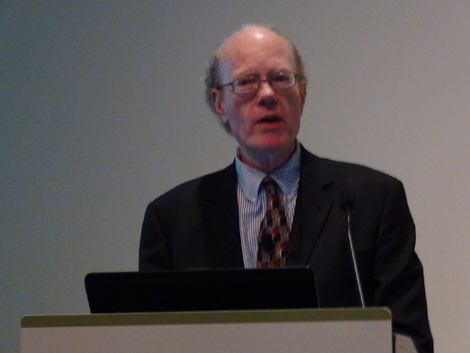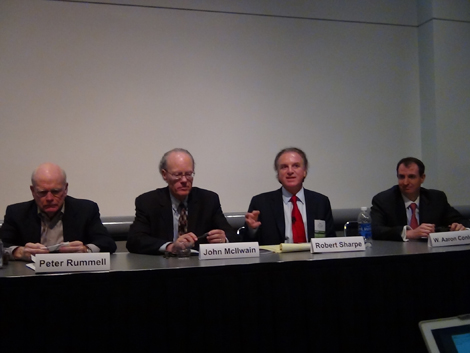ULI Special Report: The New Seniors—Not So Senior Anymore
The focus on the Baby Boomer generation has intensified in the 10 months since the first one turned 65. But that magic number might not be the right one to follow anymore, and opportunities that are much larger will require some new thinking, according to a new report released during the Urban Land Institute Fall Meeting.
By Suzann D. Silverman, Editorial Director
 The focus on the Baby Boomer generation has intensified in the 10 months since the first one turned 65. But that magic number might not be the right one to follow anymore, and opportunities that are much larger will require some new thinking, according to a new report released during the Urban Land Institute Fall Meeting.
The focus on the Baby Boomer generation has intensified in the 10 months since the first one turned 65. But that magic number might not be the right one to follow anymore, and opportunities that are much larger will require some new thinking, according to a new report released during the Urban Land Institute Fall Meeting.
The U.S. population age 65 and above offers huge potential for housing and other real estate efforts, according to report author John McIlwain, ULI senior resident fellow for housing. During a media release of the report on Wednesday, he pointed out that that age group will grow by 120.1 percent between now and 2050, a much greater rate of growth than any other age group. That’s despite the fact that the U.S. population remains relatively young compared to those of other countries : By 2050, the United States will be the second-youngest country, behind India, with all other countries featuring a significantly older population.
But capitalizing on the needs of the huge older U.S. population is hardly simple. While much has been made of the differences between the Baby Boomers and their parents, there are in fact three separate generations to be watched, each with their own characteristics, McIlwain noted. The oldest are the Greatest Generation, born between 1901 and 1924, with the youngest age 88.
The youngest group, the Leading Edge Boomers, were born from 1943-1954; ranging from 58 to 69 years old, they are the much-talked-about Baby Boomer group with a history of disruption, having participated in events and experiences ranging from the civil rights movement to Vietnam (fighting in it or against it), drugs, rock ‘n’ roll, women’s lib, the birth of environmentalism and the evolution of technology. This group saw record job growth during recession while others lost jobs and have growing incomes and net worths, while younger segments have seen decreased income. At the same time, many of them won’t have enough savings for retirement. They have a need for healthcare and other services but are not ready to move into seniors housing.
Then there is the Silent Generation, born from 1925-1942 and age 70-87. Sandwiched in between the other older-adult segments, they offer characteristics of both: a more classic seniors lifestyle mixed with a need to be actively engaged. They keep pace with changes in technology and are really canaries in the cage, setting the stage for the greater demands to come from the generation behind them.
 What does all this mean for the real estate industry? The average age in seniors communities has climbed to 84, and real estate developers and municipalities are both tasked with finding new solutions that will satisfy the Silent Generation and Leading Edge Boomers. Suburbs are particularly challenged, McIlwain cautioned, since they are really designed for kids and cars; these groups need transportation or pedestrian alternatives, smaller units for those that are reluctant to move into group housing, condominium offerings designed for those that prefer a lock-and-leave approach while they travel extensively and as well as access to technology and other amenities. And when these are provided, they must be marketed appropriately to appeal to the target demographic groups—something that is not currently being addressed adequately.
What does all this mean for the real estate industry? The average age in seniors communities has climbed to 84, and real estate developers and municipalities are both tasked with finding new solutions that will satisfy the Silent Generation and Leading Edge Boomers. Suburbs are particularly challenged, McIlwain cautioned, since they are really designed for kids and cars; these groups need transportation or pedestrian alternatives, smaller units for those that are reluctant to move into group housing, condominium offerings designed for those that prefer a lock-and-leave approach while they travel extensively and as well as access to technology and other amenities. And when these are provided, they must be marketed appropriately to appeal to the target demographic groups—something that is not currently being addressed adequately.
This represents a whole new opportunity, believes ULI chairman Peter Rummell, and it’s one real estate companies don’t know how to handle. He likened it to the wave of golf course development 40 years ago and the new value brought to land. Added W. Aaron Conley, president of Third Act Solutions: “Location is key, and it’s something that has been overlooked because, generally speaking, we have been driven by land prices.” That, he said, will have to change to ensure the right amenities are provided to these high-demand user groups.
New financing models will also be needed, McIlwain affirmed; already, some under discussion include rental units or a combination of rent and a refundable deposit.







You must be logged in to post a comment.